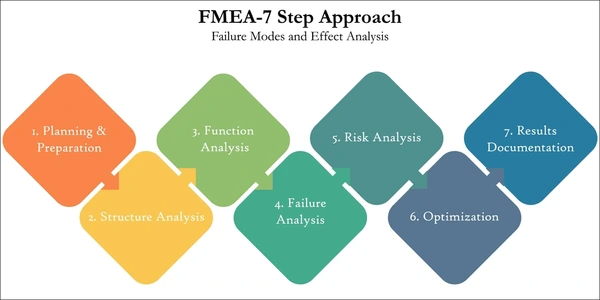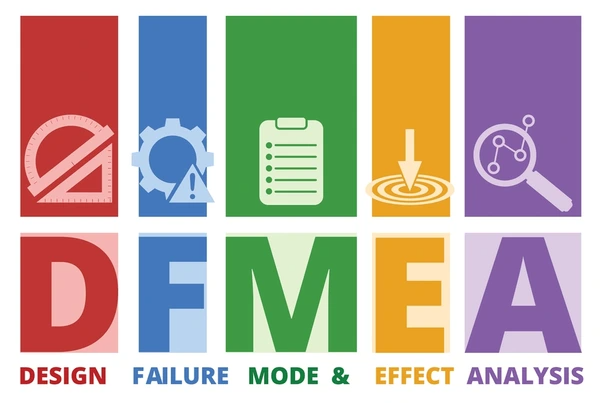
Failure Mode and Effects Analysis (FMEA) is a proven method for identifying potential problems in products and processes before they occur. It is widely used across industries to improve quality, increase reliability, and reduce the risk of failure. There are different types of FMEA depending on the focus of analysis: DFMEA (Design FMEA), PFMEA (Process FMEA), and System FMEA. Each type has a unique role in product development and operational excellence.
In this article, we’ll break down the differences between DFMEA, PFMEA, and System FMEA, explain when and how to use each one, and show how tools like PatSnap’s Eureka Feasibility Analysis AI Agent can enhance the effectiveness of every FMEA phase.
What Is FMEA and Why It Matters
Failure Mode and Effects Analysis (FMEA) is a proactive, structured technique used to identify where and how a product or process might fail and assess the relative impact of different failure modes. This early identification allows organizations to correct potential issues before they affect production or the end user.
Each failure mode is analyzed based on three key metrics:
- Severity (S) – the impact of the failure on performance or safety.
- Occurrence (O) – the likelihood of the failure happening.
- Detection (D) – the chance of catching the failure before it causes harm.
These values are multiplied to calculate a Risk Priority Number (RPN = S × O × D), which helps teams prioritize corrective actions. Failure Mode and Effects Analysis is typically conducted by cross-functional teams and applied throughout the product lifecycle—from concept to post-launch.

Types of FMEA
DFMEA: Design Failure Mode and Effects Analysis
DFMEA focuses on identifying failure modes in a product’s design before it is manufactured. This includes analyzing components, materials, tolerances, and functions to prevent design-level issues such as part misalignment, fatigue, or underperformance.
DFMEA is essential during the early design phase and helps ensure that the product meets performance, safety, and regulatory requirements. It is commonly used in automotive, aerospace, electronics, and medical device industries.

PFMEA: Process Failure Mode and Effects Analysis
PFMEA is used to analyze potential failures in the manufacturing or assembly process. It identifies risks such as incorrect machine settings, material handling errors, human mistakes, or improper sequencing. The goal is to ensure that the process produces high-quality outputs with minimal variation or defects.
PFMEA is usually conducted after the design has been finalized and during production planning. It supports lean manufacturing, quality assurance, and continuous improvement programs.
System FMEA: System-Level Failure Mode and Effects Analysis
System FMEA evaluates potential failure modes in the interaction between subsystems, interfaces, and complex system functions. It is applied during early product architecture development to ensure that integrated systems work together reliably. System FMEA is vital in sectors where reliability and functional safety are critical, such as automotive electronics, embedded systems, or aerospace control systems.
Comparing the Three Types of FMEA
| Aspect | DFMEA | PFMEA | System FMEA |
|---|---|---|---|
| Focus | Product design | Manufacturing and assembly process | System-level functions and interfaces |
| Purpose | Prevent design flaws | Minimize process variability | Ensure system integration and safety |
| Timing | Early in product development | After design, before production | During system architecture planning |
| Common Users | Design engineers | Process & manufacturing engineers | Systems engineers |
| Examples | Component fatigue, material stress | Operator error, tool misalignment | Communication failure between modules |
How PatSnap’s Eureka AI Agent Enhances Every FMEA Type

Traditional FMEA methods are powerful but often limited by human judgment, time constraints, and access to relevant technical data. That’s where the Eureka Feasibility Analysis AI Agent comes in—boosting the accuracy, speed, and insightfulness of Failure Mode and Effects Analysis across all three types.
1. AI-Powered Failure Mode Prediction
Eureka automatically identifies failure modes by scanning global patent data, technical documents, and past case studies. Whether you’re running a DFMEA on a dynamic silencer design or conducting a PFMEA for its smart manufacturing process, Eureka highlights hidden risks that engineers might miss.
2. Real-Time Risk Scoring with Technical Validation
Rather than subjective scoring, Eureka uses AI models trained on historical outcomes to provide more consistent and objective RPN values. For System FMEA, this includes interface compatibility issues, signal latency, or failure propagation across subsystems.
3. Simulation-Based Feasibility Analysis
For complex systems, Eureka simulates performance conditions and predicts where design or process failures might occur. This is particularly useful in evaluating new concepts like sensor-based cavity adjustment in multi-level silencers.
4. Smart Recommendations and Continuous Updates
Eureka doesn’t just flag problems—it offers AI-generated solutions based on proven fixes in similar designs. It also allows engineers to update FMEA records continuously as the design evolves or as new process data becomes available.
5. Automatic Report Generation
Save hours of manual work with Eureka’s automatic FMEA report builder. Whether it’s a DFMEA, PFMEA, or System FMEA, Eureka delivers professional-grade reports with tables, risk matrices, and action tracking—all exportable and audit-ready.
When to Use Each FMEA Type
Use DFMEA during the early stages of product design to ensure that the product will meet requirements and withstand expected use conditions. Switch to PFMEA when you’re transitioning into process planning and want to eliminate production-related risks. Apply System FMEA at the system architecture stage to evaluate how components, modules, and subsystems interact—and ensure total system reliability.
In many product development workflows, all three types are used in sequence. This layered approach ensures that both design and process risks are addressed comprehensively.
Final Thoughts: Smarter FMEA with Eureka
Failure Mode and Effects Analysis remains a cornerstone of product and process reliability. But as designs become more complex and timelines shorten, teams need intelligent tools to keep up. PatSnap’s Eureka Feasibility Analysis AI Agent brings automation, technical depth, and speed to traditional FMEA. Whether you’re improving component design with DFMEA, reducing process variability with PFMEA, or ensuring system integrity with System FMEA, Eureka turns insights into action—faster and smarter.
Don’t just analyze risk—predict it, prevent it, and validate it with Eureka.
To get detailed scientific explanations of FMEA, try Patsnap Eureka.


